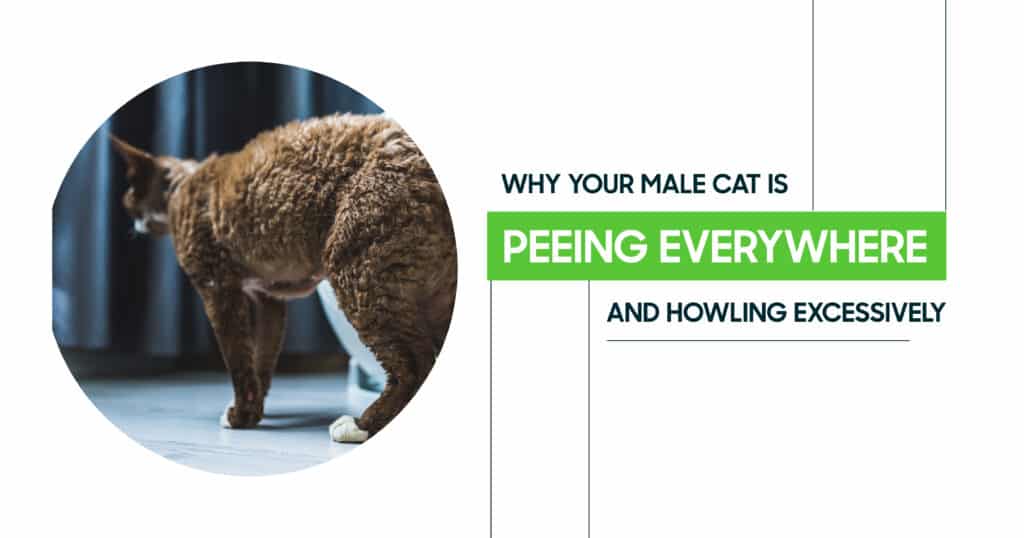As responsible pet owners, we can make decisions for the well-being and happiness of our pets. One such decision is to get them spayed or neutered. While many owners know the procedures, the depths of their benefits could be more well-known.
Spaying and neutering pets is the first step towards health, improvements in pet behavior, and control of the pet population. This blog post takes the reader deeper into the benefits of spaying and neutering, so it has many health benefits. At the same time, it assists in Pet population control through spaying and neutering procedures and how that can help achieve responsible pet ownership.
If they know these procedures’ necessity, pet owners will only make the best decisions for their pets, families, and communities. Let’s discuss why spaying and neutering are so important.
Understanding Spaying and Neutering
Now, let’s understand what spaying and neutering are before discussing the health benefits of spaying. Spaying and neutering are two different surgical operations that sterilize pets so that they cannot reproduce. Though both are alike since the reproductive organs are removed, the procedure is quite different in both males and females.
What Is Spaying?
Spaying is the surgical removal of a female animal’s ovaries and uterus. Most are spayed at six to nine months old, but depending on their size, breed, and health, it may be earlier or later. Spaying pets is a minor, routine surgery that may safely be done under general anesthesia.
What Is Neutering?
This process is also known as getting a male animal neutered. While “neutering” technically applies to males and females, it usually applies to male animals. Just like spaying, this procedure is typically done on young pets, although this can be done on pets of any age, provided they are healthy.
Both are considered routine surgeries, and a majority recover very fast. The long-term benefits far outweigh the momentary pangs or discomfort.
The Health Benefits of Spaying and Neutering Your Pets
One of the main reasons veterinarians recommend neutering or spaying pets is because spaying and neutering pets bring great health benefits that accompany these procedures. These surgeries have prevented specific health issues and improved the quality of life of male and female pets.
Health Benefits of Spaying
The health benefits of spaying are numerous, particularly for female pets:
| Prevention of Uterine Infections | The most significant risk from an unspayed female animal is a potentially lethal uterine infection called pyometra. This can begin in an intact female. It’s an entirely severe, painful, expensive infection to resolve. |
| Removal of Ovarian Cancer | Spaying removes the ovaries, and your pet will never be subjected to ovarian cancer, which can be deadly if left unchecked. |
| Reduced Risk of Mammary Cancer | Spaying Female Pets Before the First Heat Cycle. The risk of developing mammary cancer is diminished in female dogs spayed before a first heat cycle. As a result, chances are increased if the pet is spayed later in life. |
| No Heat Cycles | The female pet gets restless and moody and is inclined toward behavioral patterns like excessive barking, howling, and sometimes leaving the house to look for a mate. That goes entirely with spaying as well, as their behavioral comfort improves. |
Neutering Pets Advantages
Neutering male pets also offers some health and behavioral advantages:
| Testicular Cancer Prevention | Neutering male pets removes the testes so that a common and potentially preventable condition in intact males is not experienced. |
| Prostate Problems | In this case, the risk is that a male pet with prostate problems develops infection and enlargement. With neutering, this probability will drastically decline, which means a healthier, more extended life for your pet. |
| Less Aggression and Roaming | The neutered male will be less aggressive and less likely to seek mates for roaming, making him more secure but with fewer chances of getting into a fight or even an accident. |
| Improved Behavior | Neutering corrects behavioral flaws, such as territorial marking, dominance, and sexual behaviors. Many neutered pets are calmer and easier to manage. |
Pet Overpopulation Is Controlled Through Spaying and Neutering
One of the most compelling arguments for spaying and neutering your pets is that these surgeries will help control pet populations. Each year, millions of unwanted animals are born, most of whom end up in shelters with no hope of being adopted.
Reducing Unwanted Litters
Hundreds of thousands of puppies and kittens are born yearly to pets that were not neutered or spayed. Just a few of those puppies and kittens will find a home and get turned loose in completely overcrowded shelters.
Shelters have no alternative but to euthanize when there isn’t enough room for all the creatures on earth or facilities needed for all of them. It saves unwanted puppies and kittens from birth and directly affects the decrease in the number of animals born unwanted every year through spaying or neutering pets.
Spaying and Neutering Alleviate the Situation of Euthanasia
This means that when shelters become overcrowded, many animals will undergo euthanasia injections. If we choose to spay or neuter our pets, fewer animals will be born into the world, and they will never have a chance to live in a home. This is critical for animal welfare.
Community Influence
Spaying and neutering reduce the number of stray animals since unplanned litters are minimized. Most stray animals live unhealthy lives because they seek food and shelter; most threaten other pets and people. When the number of spayed and neutered pets increases, the number of stray animals declines, and their quality of life greatly improves.
Behavioral Benefits of Spaying and Neutering
Apart from these health benefits of spaying and neutering, these procedures also significantly affect your pet’s behavior. Most behavioral problems in pets are associated with free sex hormones; therefore, eliminating these behavioral problems results from spaying or neutering.
Reduced Aggression
Males in pets are more aggressive towards other animals and, in some cases, towards human beings. Neutering your pet reduces this form of aggression to a huge degree, and your pet will be way more social and more accessible to deal with. It reduces fighting with other animals, often leading to injuries and the spread of diseases.
Less Roaming
Neutered pets, primarily males, are likely to go around looking for their mate. They may become lost or get injured in such activities, or even killed accidentally. Neutering of the pet minimizes their roaming, keeping the furry friend safe and cheerful at home.
Less Marking and Territorial Behavior
An intact male will pee on furniture, walls, or even his owner’s stuff. This can be very stressful and out of hand. Neutering pets reduces the instinct to mark possessions, meaning fewer behavioral problems and a happier home.
Myths and Misconceptions about Spaying and Neutering
While spaying and neutering have many advantages, myths and misconceptions about them sometimes prevent owners from deciding to have their pets altered. Let’s examine some of the most common myths and misconceptions.
Myth 1. Spaying and Neutering Will Change My Pet’s Personality
Most pet owners fear drastic changes like spaying or neutering will profoundly affect their personalities. The truth is that the above procedures typically lead more often to balanced and quiet personalities. They do not lose their individuality, nor do they keep them from enjoying themselves; they just eliminate hormone-driven desires, such as aggressive roamers.
Myth 2. Spaying and Neutering Are Too Expensive
Others would claim that spaying or neutering is too pricey, though this is true for some pet owners. Shockingly, so many clinics and nonprofits offer procedures for those prices. Considering the potential outcomes combined with further unhealthy conditions or unwanted litter, it tends to be small compared to the pocket.
Myth 3. My Pet Will Feel Less of a Pet
Most pet owners fear that, once neutered or spayed, their pet will no longer feel like a pet. But pets don’t associate emotional value to their reproductive organs as humans do. They will likely pass through some recovery period, and once that’s done, they’re likely to be as happy, loving, and playful as before.
The Role of Responsible Pet Ownership in Spaying and Neutering
Every owner should ensure that his or her pet lives the best possible life. Responsible pet ownership involves many aspects, but one of the most important steps you can take for your pet is spaying or neutering it.
Spaying and Neutering. A Duty of Care
This importance of responsible pet ownership involves measures against unwanted litters and keeping your pet healthy and safe. Spaying and neutering are crucial parts of responsible pet ownership, and this is an important decision for all pet owners who want to have a long, healthy, fulfilling life for their pets.
Ensuring a Healthy Future for Pets and Communities
Spaying or neutering helps your pet and generally aids the well-being of any community by significantly reducing unwanted animals. Shelter spaces and the number of animals on the streets are reduced. It brings people together by mutual work toward every animal’s place in good hands with quality living.
Take the First Step. Spay or Neuter Your Pet Today
Suppose you are prepared to make the responsible decision for your pet and community, such as spaying or neutering your pet today. Contact your local veterinarian to learn more or to book an appointment. Spaying and neutering are both relatively simple procedures with many lifelong benefits. You make a great decision to give your pet the best chance possible for a healthy, happy life while helping reduce pet overpopulation in your community.
FAQ’s
-
What should be the ideal age for spaying or neutering a dog?
Most veterinarians advise pets to be spayed or castrated, usually around 6 to 9 months in age. However, if your animal is notably smaller, breeds, or has other medical conditions, advice from a veterinarian might sometimes necessitate attending to the above procedure at a time other than the one provided.
-
Will spaying or neutering a pet change behavior?
Spaying/Neutering greatly diminishes hormone-dependent behavior, including aggression, marking, and roaming. Once it has subsided, it will be easier to handle, and your pet will likely maintain your animal personality or detract from its potential to enjoy life truly.
-
Is spaying or neutering painful for my pet?
Spaying and neutering are standard surgical procedures performed under anesthetic. Your pet will not feel anything during the surgery, but slight discomfort is expected during recovery; most pets heal well, and everyday activities are achieved within a day or two.
-
Does spaying or neutering my pets prevent specific health problems?
Yes, it would have prevented spaying and neutering for some health issues, like uterine infections, ovarian or testicular cancers, and prostate issues, which would have helped your pet live longer and healthier.
-
What will happen if you don’t spay or neuter your dog?
Your pet is liable to increasingly better chances for pregnancy, sickness, and dangerous behaviors like attacks and straying, which are all indicative of already densely populated herds of household pets leading to overcrowded shelters for animals and even more homeless pets roaming the streets.






